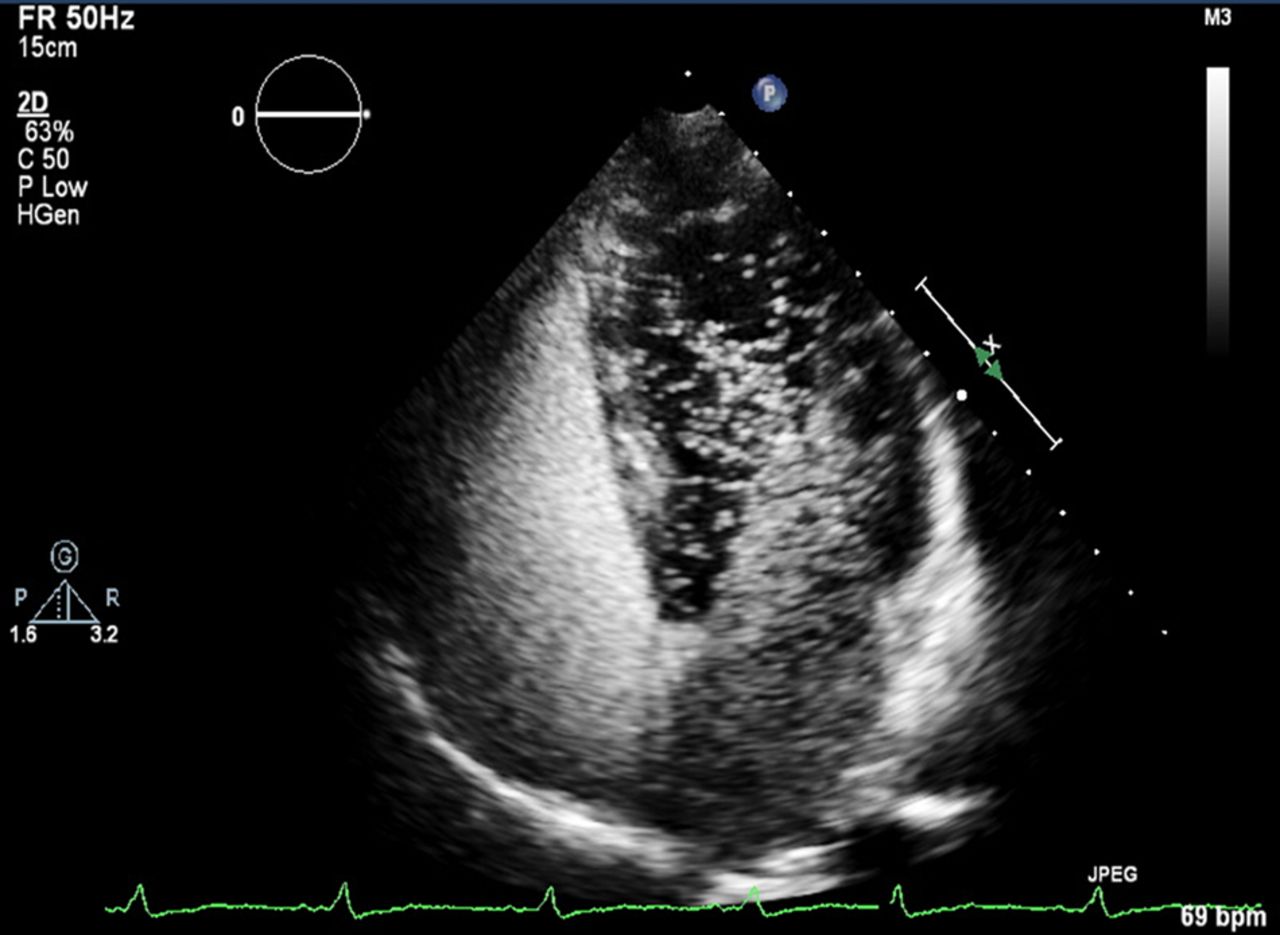Agitated Saline Bubble Echocardiogram combines the injection of saline and sound waves to visual the heart looking for possible defects in the heart.

Test Description
What is it?
Agitated Saline Bubble Echocardiography is a test that combines the injection of saline and sound waves through a hand-held transducer to produce images of the heart. It provides further information about whether your heart may have a congenital defect or issues with blood flow than a regular echocardiogram.
Why do I need this test?
Most commonly, following a regular echocardiogram there may be some evidence of a congenital defect in the heart, or if you have suffered stroke symptoms. Your Doctor may send you for an agitate saline study to investigate this further. The injection of saline during the echocardiogram will demonstrate if there is a small hole in the septal wall of the heart which you would have had from birth. The size and significance of the hole may require treatment, however, in most cases the hole will just be monitored.
What to expect
The same procedure as an Echocardiogram will be followed.
In addition, an intravenous (IV) line will be inserted into your arm. A saltwater solution called saline is mixed with a small amount of air to create tiny bubbles and then injected into your vein. This fluid then circulates up to the right side of your heart and shows up on the echocardiogram image. You may be asked to cough, which briefly increases the pressure in the heart's right side.
Normally, your lungs will simply filter out the bubbles. But if you have a tiny opening between your heart's upper chambers (the right and left atria), some bubbles will move through that hole and appear on the left side of the heart. This opening is called a patent foramen ovale (PFO). About one in four people have this finding, which occurs when the hole—which is present in everyone before birth as a normal part of development—fails to close fully upon your birth.
Procedure will take approximately 45 minutes
We bulk bill all valid referrals
Short wait times when you book an appointment with rapid results.
What are the risks?
The Echocardiogram is completely safe. It will not interfere with any electronic devices. Sometimes the transducer may be cold on the skin. No X-Rays are used, and it is similar to foetal ultrasound performed during pregnancy.
The potential risks involved in the cannulation and injection of saline are rare but can include;
- From Intravenous Cannulation;
- Intravenous cannulation failure, thrombosis, arterial puncture, infection.
- From injection of saline;
- Air embolus, neurological symptoms (headache), Shortness of Breath, respiratory distress
- Sudden cardiac arrest – very rare.
If you feel unwell or experience any symptoms including shortness of breath, chest pain, dizziness, light-headedness you should tell the doctor or technician immediately. The test can be stopped at any time.
Please advise staff if you have any of the following conditions.
- Very recent heart attack (within 2 days).
- Unstable chest pain (angina) not yet settled by medical treatment.
- Abnormal heart beats or Heart valve problems causing symptoms.
- Fluid in the lungs that is not controlled by medication and is causing symptoms.
- Recent blood clots in the lungs.
- Current swelling of the heart muscle or the sac containing the heart.
- Recent tearing of the wall of the large artery (aorta).
Preparation Details
No special preparations are necessary for an agitated saline bubble echocardiogram.
What Happens After The Test?
The results of the Agitated Saline Study will be made available to your referring Medical Practitioner. Urgent results will be communicated directly by telephone.
Why wait or pay too much for diagnostic tests?